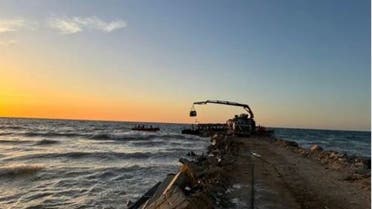ترکیہ کے صدر رجب طیب ایردوآن نے منگل کے روز زور دے کر کہا...
مغربی انٹیلی جنس ادارے کے مطابق پچھلے سال کے دوران اس نے کم از...
انسانی حقوق سے متعلق فلسطینی ادارے کی طرف سے برطانوی عدالت میں دائر کردہ...
امریکی ایوان نمائندگان کی سابق سپیکر نینسی پیلوسی نے اسرائیلی وزیر اعظم بنجمن نیتن...
پینٹاگون نے منگل کو کہا کہ امریکہ غزہ کے لیے اشد ضروری امداد کی...
امریکی سینیٹ نے منگل کی شام ٹک ٹاک پر پابندی کا بل 18 کے...
بدھ کو بل پر صدر جو بائیڈن دستخط کر دیں گے جس کے بعد...
وزیر پر 1994 کے یہودی مرکز پر بم حملے کا الزام، بم دھماکے کی...
روسی ذرائع ابلاغ کے مطابق چیچنیا کے روس نواز لیڈر 47 سالہ رمضان قدیروف...
مصری بحیرہ گورنری میں شادی کے دوران دلہن کی گاڑی نہر میں جا گری...









